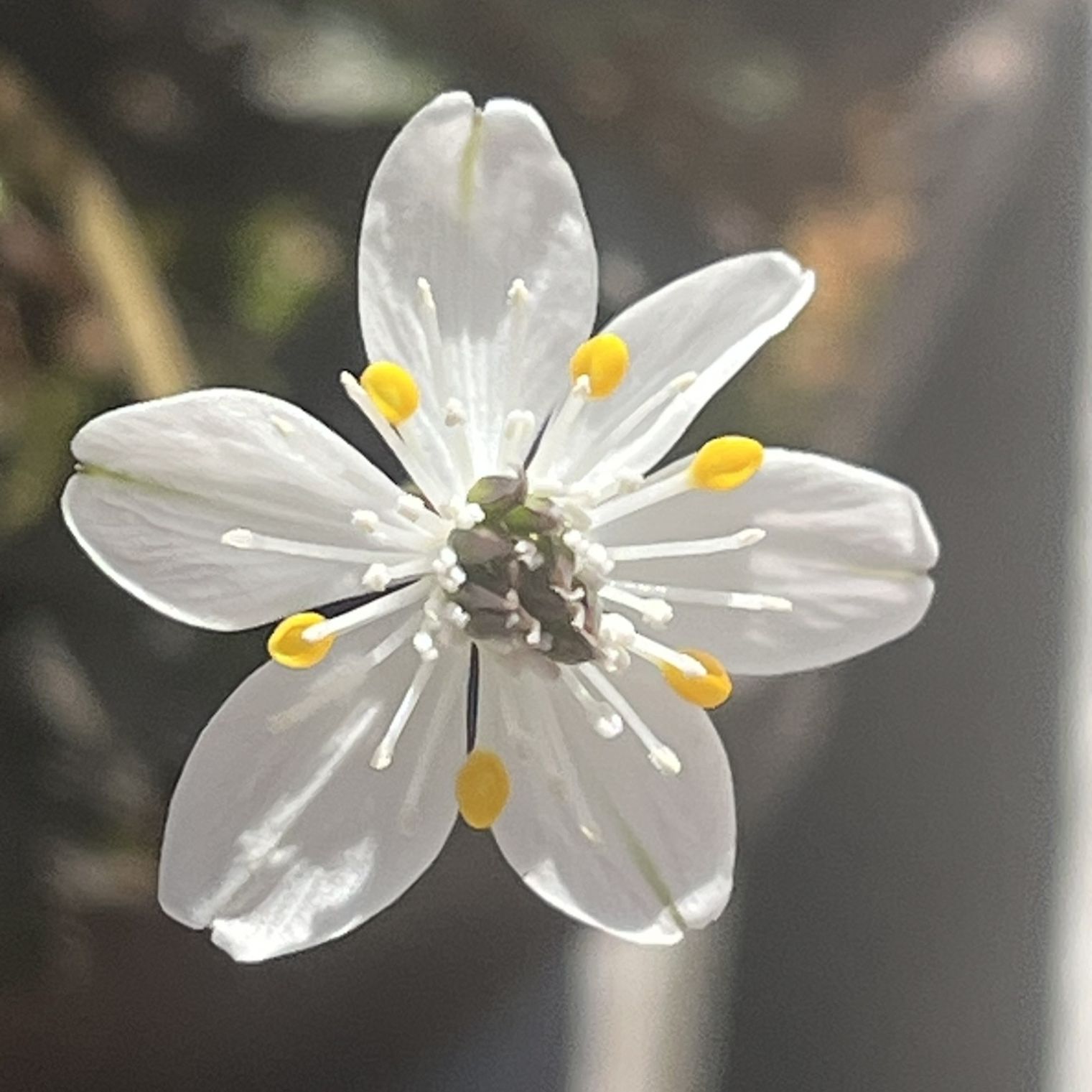牧野富太郎博士は5歳のときに母親が病死。母が好きだった花の名前を知りたい――。博士を植物の世界に誘ったのがバイカオウレンでした。
Dr. Tomitaro Makino, known as the “father of Japanese botany,” lost his mother to illness when he was five years old. At that time, he wanted to know the name of the flower his mother loved. That flower was Coptis quinquefolia, the flower that drew him to botany.
【仮名】バイカオウレン, ゴカヨウオウレン
【和名】梅花黄蓮, 梅花黄連, 五加葉黄蓮
【英名】Coptis quinquefolia
【学名】Coptis quinquefolia
【誕生】03/ ??
【開花】01, 02, 03, 04月
【花色】White
バイカオウレン
バイカオウレンの概要
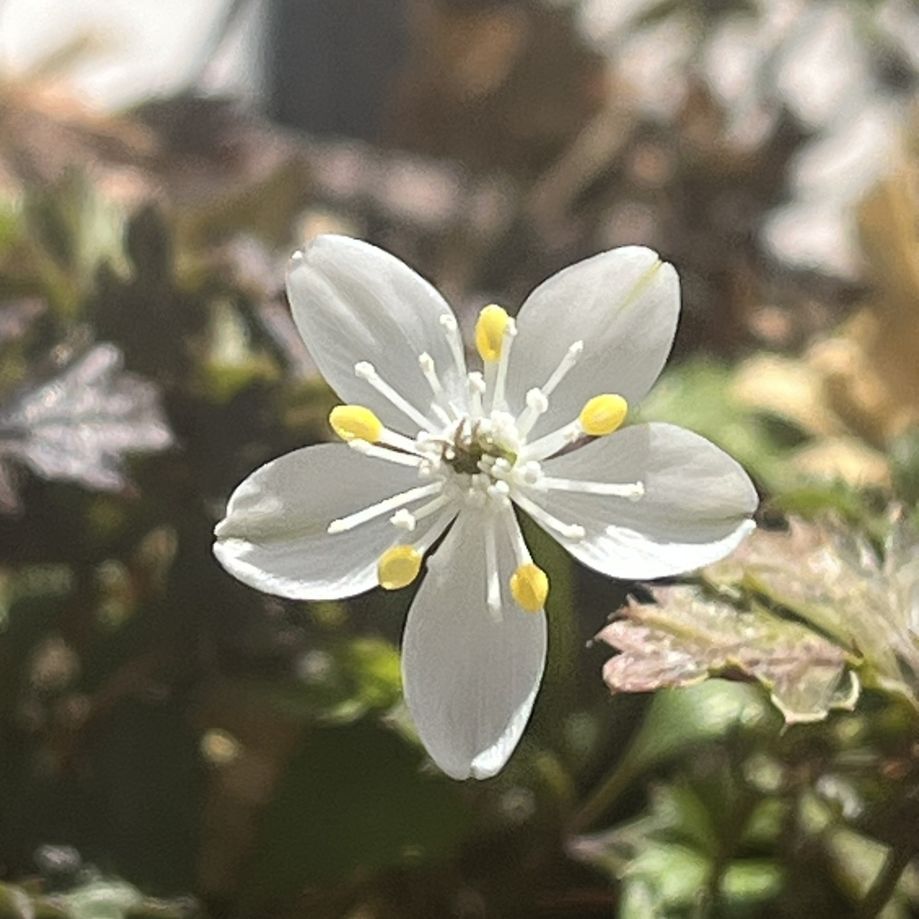
バイカオウレンはキンポウゲ科の常緑多年草。本州の福島県以南、四国の山地で自生しています。牧野富太郎博士は高知県で育ち、5歳のときに母親が病死。春、母の好きだった花が裏山で咲きます。この花の名前を知りたい――。博士を植物の世界に誘ったのが「梅花黄蓮」でした。
バイカオウレンの名前
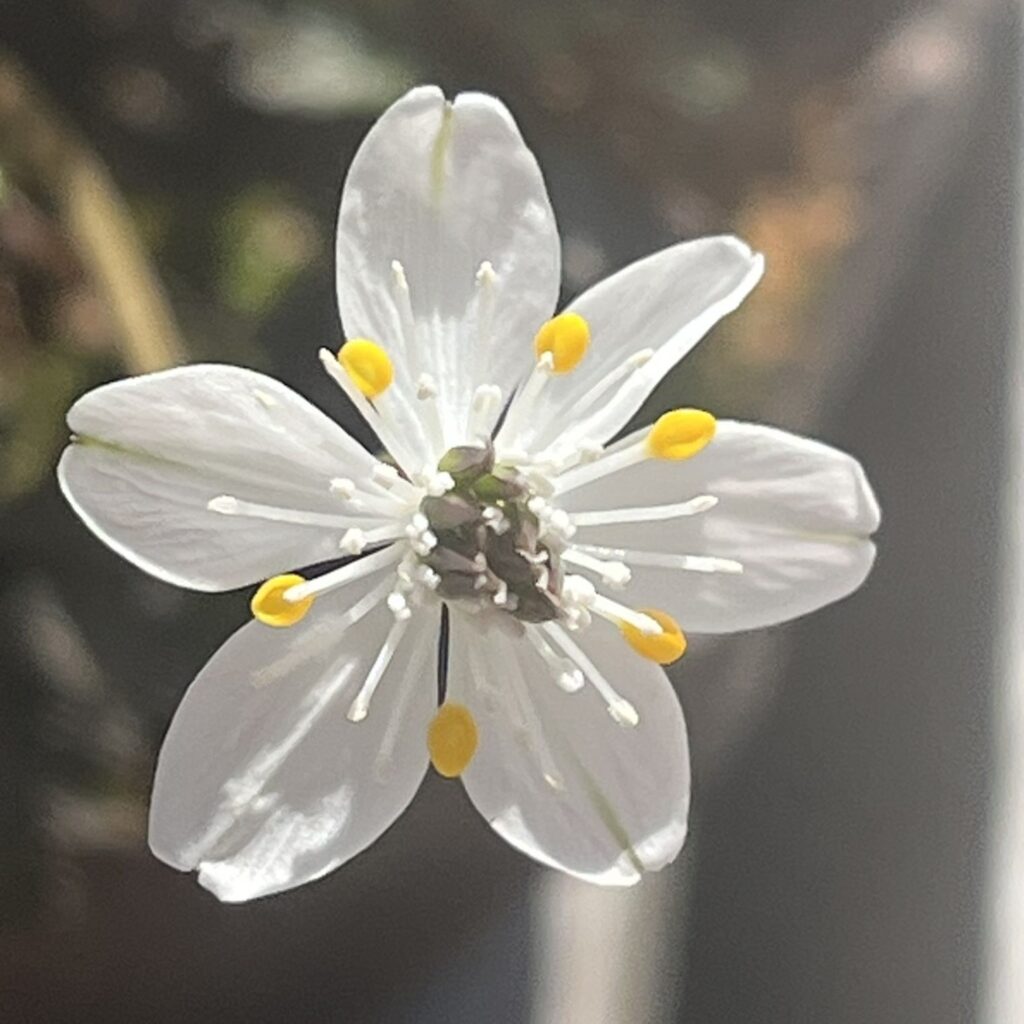
バイカオウレンの和名の由来は梅のような花が咲き、黄色の細根が連なるから。別名「五加葉黄蓮」の由来は五加木のような葉が生えるからです。ラテン語の属名コプティスは「切片」という意味で、葉の切れ込みに由来。種小名クゥインクフォリアは「5枚の葉の」という意味です。
バイカオウレンの姿形
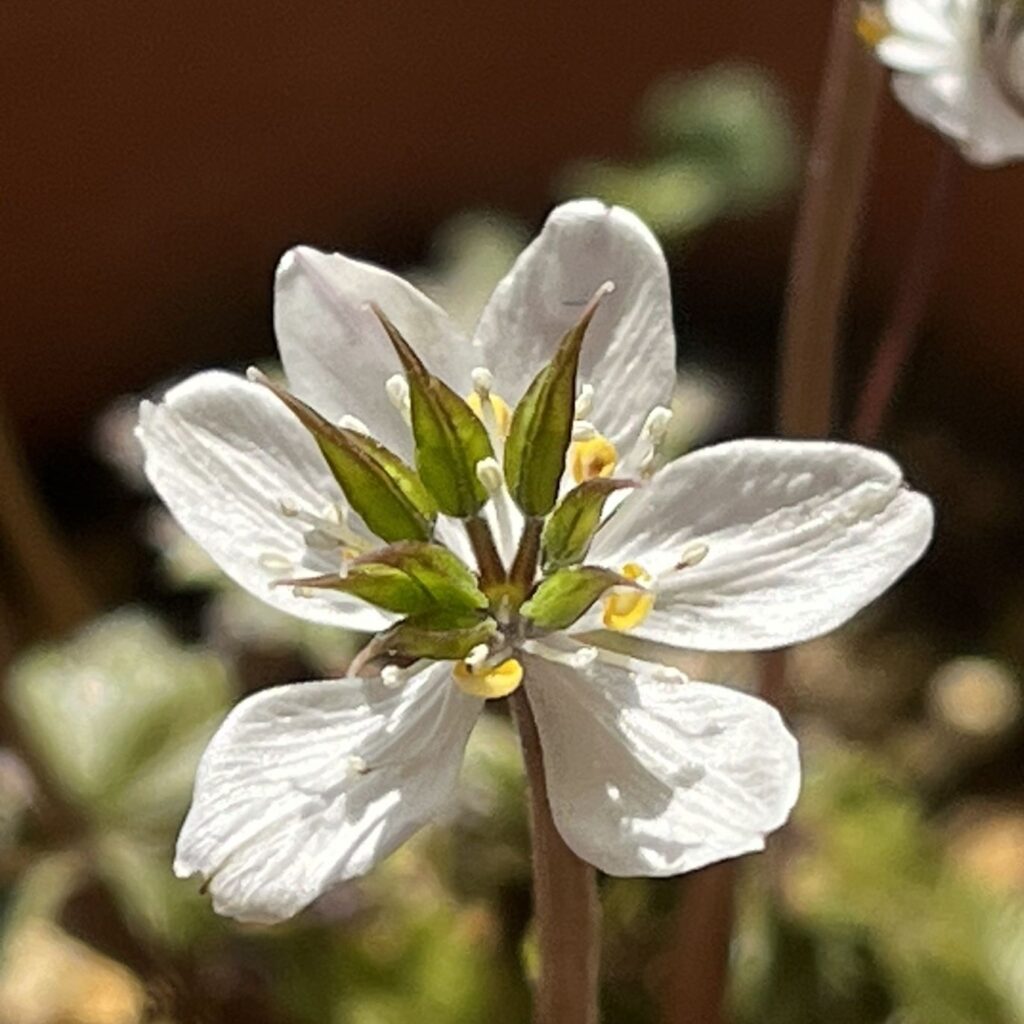
バイカオウレンは糸状の細根が這い伸びます。葉は小葉5枚の掌状複葉で根生。表面に光沢、縁に鋸歯があります。花は花弁のような白色の萼片が5枚、葯のような黄色の花弁が5枚、雄しべが多数、雌しべのような心皮が数個。袋果は輪生し、熟すと先端の穴から種子を落とします。
バイカオウレンの空似
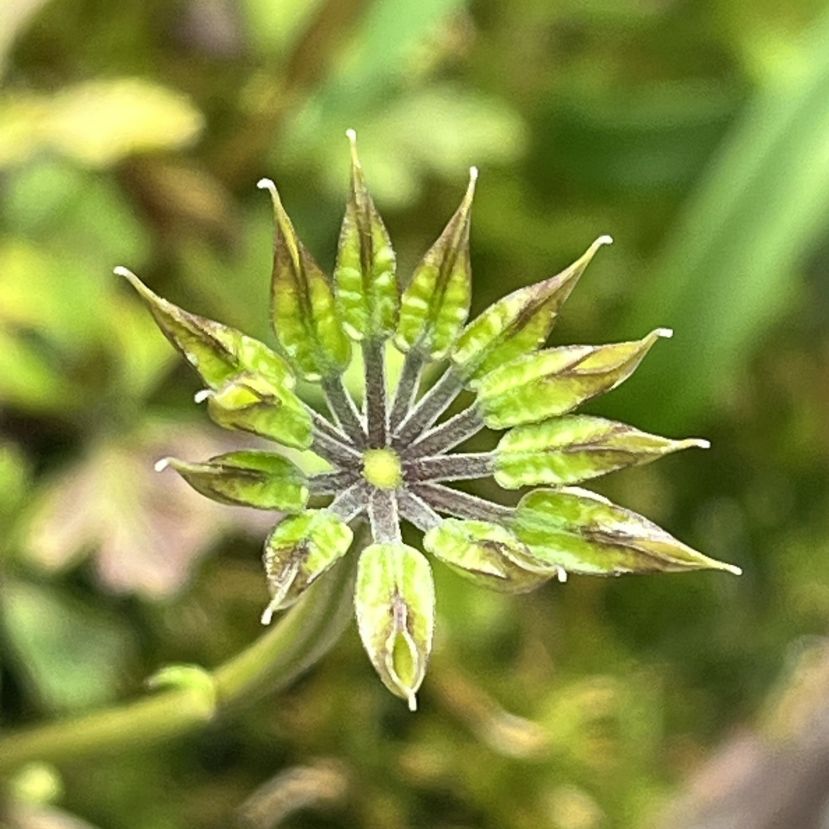
バイカオウレンと姿形が似ている「節分草」は花弁のような白色の萼片が5枚、葯のような黄色の花弁が5枚。同じキンポウゲ科で春に花が咲きます。一方、萼片どうしに隙間がなく、雄しべ先端の葯が青紫色。花の下に切れ込みのある苞葉があり、夏に茎と葉を枯らして休眠します。
Coptis quinquefolia
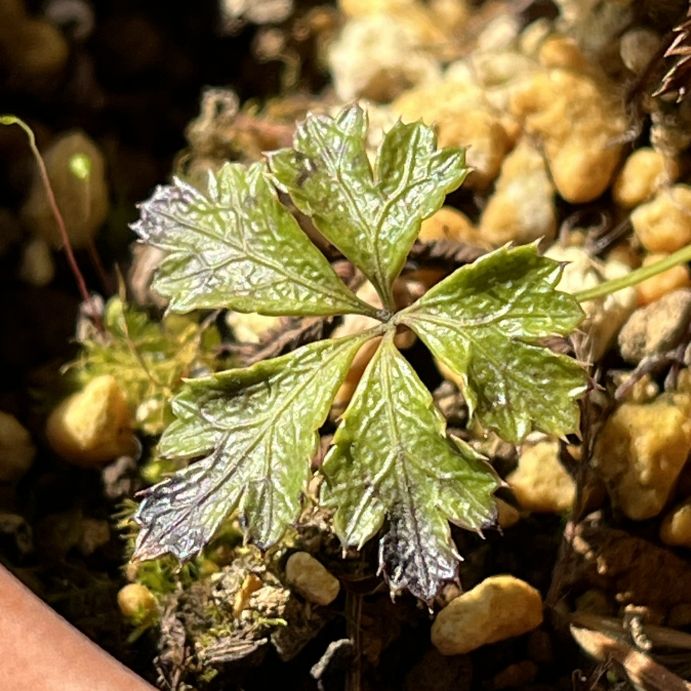
Coptis quinquefolia is an evergreen perennial plant of the Ranunculaceae family. It is found south of Fukushima Prefecture in Honshu and in Shikoku, and grows wild in mountainous areas. Dr. Tomitaro Makino, known as the “father of Japanese botany,” grew up in Kochi Prefecture and lost his mother to illness when he was five years old. Then, in the spring, a flower that his mother loved bloomed in the mountain behind his house. He wanted to know the name of that flower. That flower was Coptis quinquefolia, the flower that drew him to botany.
The Japanese name for Coptis quinquefolia means “flowers like plum blossoms blooming with yellow fine roots.” It is also known as “Leaves like Acanthopanax sieboldianus and yellow rootlets”. The Latin genus name Coptis means “slices” and is derived from the incisions in the leaves. The specific name quinquefolia means “five-leaved”.
Coptis quinquefolia has thread-like rootlets that creep. The leaves are palmately compound leaves with five leaflets that grow at the base. The leaves have a glossy surface and sawtooth edges. The flowers have five petal-like white sepals, five anther-like yellow petals, many stamens, and several pistil-like carpels. The capsules are whorled and drop seeds from holes at the tips when ripe.
“Eranthis pinnatifida”, which looks similar to Coptis quinquefolia, has five petal-like white sepals and five anther-like yellow petals. It is in the same Ranunculaceae family and blooms in spring. However, the difference is that there is no gap between the sepals and the anthers at the tips of the stamens are blue-purple. There are notched bracts under the flowers, and in summer the stems and leaves die and the plant goes dormant.

